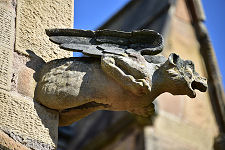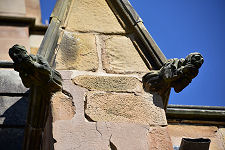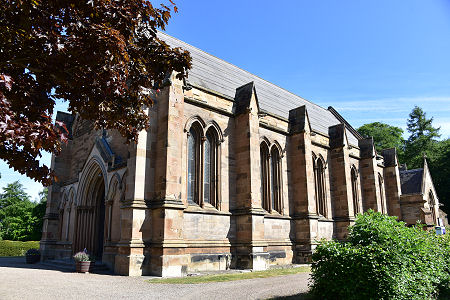 St Mary's Dalkeith, Seen from the West |
St Mary’s Scottish Episcopal Church stands close to the Town Gate, the main access from Dalkeith High Street into Dalkeith Country Park, once the grounds of Dalkeith Palace.
St Mary’s was built in 1843 by the 5th Duke of Buccleuch, the then resident and owner of Dalkeith Palace, as a gift to his wife to serve as a place of worship for their family. As family chapels go, it’s impressive. The church was consecrated for use by the wider Episcopalian community two years later in 1845. In 1958 the 8th Duke of Buccleuch gifted the church and the land it stands in to the Diocese of Edinburgh and the church’s congregation.
The church is built in what has been described as “English university chapel style architecture”. The interior is spacious and the church has a double hammerbeam roof with fan vaulting. The stained glass in the church is particularly fine. The church organ was made by Hamilton of Edinburgh and installed in 1846. It is hydraulically blown. (Continues below images...)
 Inside St Mary's, Looking North-East |
 Inside St Mary's, Looking South-West |
There is a memorial chapel on the north side of the choir which is home to an effigy of the 5th Duke of Buccleuch and to memorial tablets to members of the Buccleuch family who are interred in the crypt.
St Mary's Dalkeith is part of the Scottish Episcopal Church, a member of the world-wide Anglican Communion which traces its history back to St Columba and the early days of Christianity in Scotland. Like its sister-church south of the border, the Church of England, the Scottish Episcopal Church is governed by Bishops. This is one of the things that distinguishes it from the much larger Church of Scotland, a Presbyterian Church governed by representatives of the congregation.
This may not initially sound like a major difference, but it was King Charles I's efforts to impose government by Bishops on the Presbyterian Church of Scotland which led to a riot in St Giles' Cathedral in Edinburgh on Sunday 23 July 1637. This in turn led directly to the Bishops' Wars; the Wars of the Covenant; the English Civil War; the execution of Charles I; and Cromwell's occupation of Scotland: 23 years of wide-ranging conflict that did not really end until the restoration of Charles II in 1660. Those days are, thankfully, long gone, but it helps to know that differences of opinion about church governance were once, quite literally, a matter of life and death.
 St Mary's Dalkeith, Seen from the South |
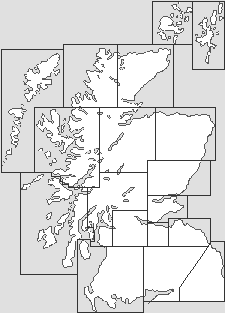
|
|
|
Visitor InformationView Location on MapHigh Street, Dalkeith, EH22 2NA. Tel: 0131 663 7000. Grid Ref: NT 335 677 stmarysdalkeith.org.uk What3Words Location: ///paler.marsh.steep |
 View Across Church |
 Effigy of the Fifth Duke |
 Decorative Floor Tiles |
 Altar and North-East Window |
 The Font |
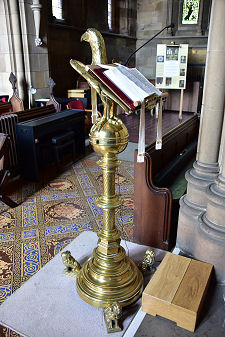 The Lectern |


